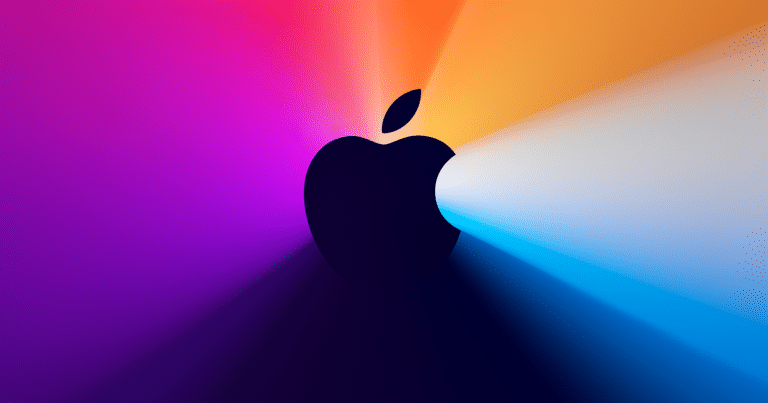
Apple-related hardware rumors have become a favorite pastime in the AR world. But after a few years of rapid-fire AR-glasses rumors, the latest chatter shifts to VR. As you’ve likely heard, Bloomberg reported last week that Apple has plans for a VR headset to release next year.
Codenamed N301, the device is to be a high-end headset (think: more Valve Index, less Oculus Quest). In a relatively un-Apple move, Bloomberg reports that the device will have a first-year annual sales target of a few hundred thousand units — about one per-Apple store, per-day.
We say “un-Apple” because its market cap dictates a fiduciary drive to usually shoot for massive markets, as we’ve examined. But could there be ulterior motives beyond top-line revenue? We’ve been asking ourselves this question in light of our ongoing “follow the money” exercise.
These speculated motives all trace back to a common goal: to fertilize the soil for Apple’s larger play: AR glasses. That hardware could sit at the center of a wearables suite that will redeem the iPhone’s decelerating growth. In fact, Watch and AirPods have already gotten started.
2021 Predictions: AR Glasses Evolutionary, Not Revolutionary
Leverage & Logistics
One way VR glasses could support Apple’s AR plans is through in-market UX testing that helps refine AR glasses design. This is something that Facebook and Snapchat are openly doing for AR glasses research, while Apple is held back by its covert product R&D paradigms.
But the bigger way that VR can support eventual AR glasses is through supply-chain leverage and logistics. This is a classic move in Apple’s playbook, which it’s perfected over the years through economies of scale that maximize its margins — the name of the game in hardware.
How will it do this with VR specifically? Given that AR and VR share technological underpinnings, VR could prime AR glasses’ supply chain to some degree. In other words, prospective 2023 AR glasses could hit the ground running from a production standpoint versus a cold start.
While doing that, Apple could also ambiguate its supply-chain evidence for AR glasses — a top source of Apple product rumors and leaks. Hiding those plans in adjacent VR product development isn’t a primary driver but could be a nice bonus for the famously-secretive Apple.
The supply-chain angle also works in reverse. A VR device’s supply, cost containment and margin optimization — again, classic Apple playbook — can benefit from existing Apple screens, cameras, sensors, and silicon. In other words, VR plays into apple’s classic vertical integration.
Closer to the Silicon
Unpacking some of those opportunities for vertical integration, Apple VR glasses could be a launch point for the rumored rOS. This “Reality Operating System” will be an iOS offshoot, sort of like WatchOS and tvOS, that could seed developer activity and interest for spatial experiences.
This would also elevate 3D development in Apple’s world from an iOS-orbiting SDK (ARkit) to a dedicated operating system. This could mean more focused software experiences and apps, and ultimately greater integration with non-mobile hardware — starting with VR and eventually AR.
Elsewhere in the stack is Apple’s latest conquest: Silicon. Now that Apple makes its own chips, it can achieve power efficiencies and performance needed for VR and (eventually) AR. These are graphically-intensive and power-hungry technologies that benefit from being closer to the silicon.
In fact, part of last week’s Bloomberg report specifies that Apple’s VR headset will pack an SoC that exceeds the specs of today’s flagship M1 chip. And with VR at the top of Apple’s processing hierarchy, it will push the limits of Silicon that then benefits other hardware as it trickles down.
Then there’s LiDAR, which Apple already has up its sleeve. VR’s inside-out tracking could benefit from depth-sensing for robust AR experiences through the same hardware. Combined with RGB cameras for color, LiDAR could create compelling VR and AR passthrough experiences.
Two Horse Race
Beyond the technical and supply-chain aspects of Apple’s rumored VR play, what about market dynamics and competitive position? Put another way, what does this mean for the other VR leader today: Facebook? It’s investing billions in VR (and AR) to future-proof its business.
One answer to that question is that Apple’s device will occupy a different segment of the market than Facebook’s flagship Quest 2. Because the two devices are driven by vastly different goals (through the lens of our “follow the money” exercise), they could be vastly different products.
For example, if the above speculations are correct, Apple VR is more of a means than an end in revenue terms. This aligns with the meager sales targets Apple has set for the device. It also knows it can’t compete with Facebook on price, so it’s going for a lower-volume premium play.
That brings us to Facebook’s approach. As we’ve examined, it’s playing a long game for VR and “trading margins for market share,” to build a network effect in VR (classic Facebook). That lets it sell hardware at cost or even at a loss, which is hard to compete with… and Apple knows it.
Apple also knows it has to catch up to Facebook with a content and developer ecosystem. It could take an iPhone 1 approach with tightly-integrated in-house apps that expand when an app store is launched at a later date. The latter could seed developer activity for an eventual AR play.
Either way, Apple and Facebook competing in VR — albeit with different angles and price points — means consumers (and VR itself) ultimately win. We’ll pause there and circle back tomorrow in our weekly XR Talks series that will feature a panel discussion on this topic. Stay tuned.
[02/04 update: The Information reveals additional details this week, including possible features & pricing. UploadVR reports (the Information article is paywalled).]






